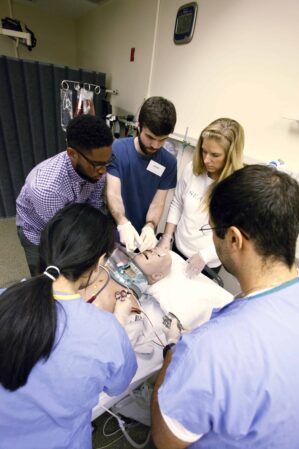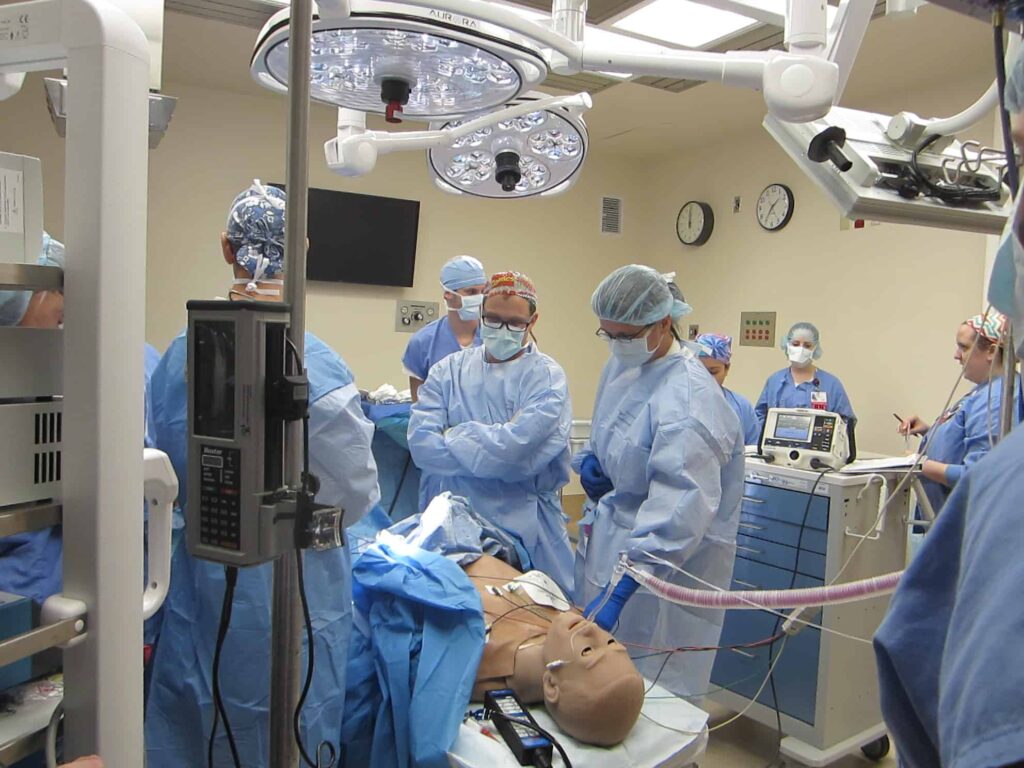
The Simulation Center at UAMS is dedicated to excellence in patient healthcare by advancing patient safety and improving multidisciplinary team performance through use of state of the art simulation education. Our mission is to provide high-quality simulation for current and future healthcare professionals. To do this, we train these healthcare professionals to practice safe, effective, and compassionate care with the goal of improving patient safety.
- Improve patient safety and quality of care
- Improve teamwork
- Enhance clinical skills competence to include physical examination, clinical reasoning, and physician/patient communication
- Become the resource/leader for patient healthcare simulation education in the state and nation
- Promote learning in a safe, controlled environment using state-of-the-art equipment
- Assess competence of undergraduate healthcare learners
- Maintain continuing competence of healthcare providers by using clinical simulation for continuing medical education
- Improve response to unusual emergency situations without risk to the patient

Why Use Medical Simulation
Medical simulation offers a number of benefits to practicing physicians, nurses, first responders, medical students and nursing students – virtually anyone involved in providing health care services.
- Educational Effectiveness – A highly realistic simulation of patient conditions creates an incredibly realistic environment in which to develop teamwork, leadership and communication skills.
- Multi Function Use – The nature of medical simulation allows for a wide range of simulated situations to provide training to a diverse group of health care professionals.
- Practice Rare Scenarios – Because the situation is simulated – like theatre – the Simulation Center staff can create virtually any situation to allow participants to be exposed to a variety of unusual or difficult situations they may face in real life – before they face it in real life.
- Anatomically Realistic – High Fidelity Manikins have realistic anatomical features to allow medical staff to practice making invasive medical procedures in a realistic way.
